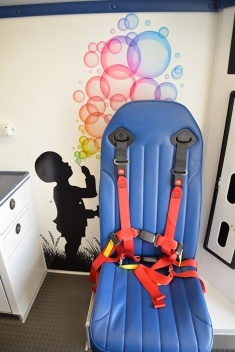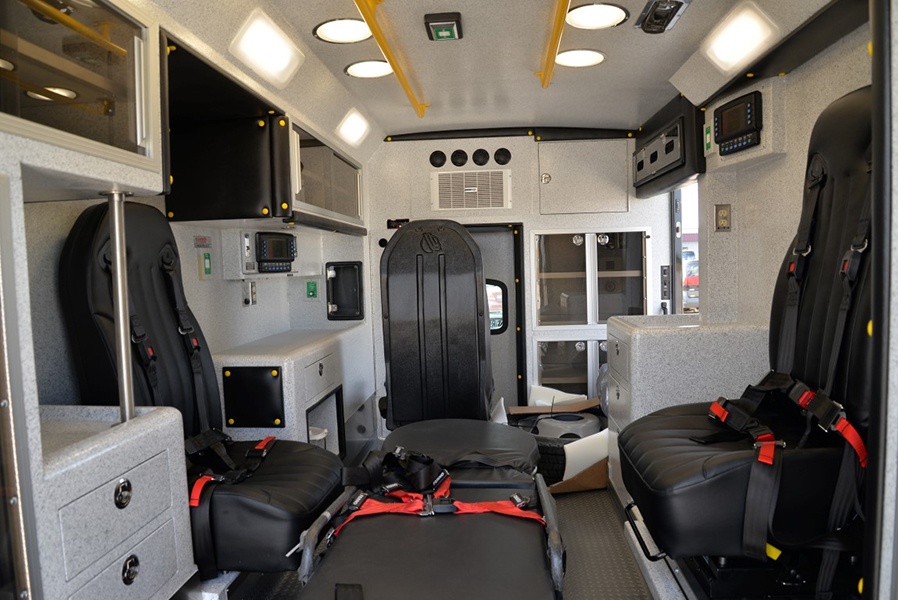Awards and Certifications
What is Change Notice 8 and What Does it Mean for Your Department?
Originally published on August 25, 2016Updated on October 20, 2019

In May of 2015, the draft version of KKK Change Notice 8 was released for public review. The draft of this document was released for public comment for a period of one month, in which time anyone was welcome to comment on potential changes. After this time, the change notice went into effect on any order placed after July 1, 2015. As in years past, it has been decided at the state level which states choose to follow KKK-A1822-F in full, part or not at all. The same held true for the regulations required by Change Notice 8. Several states quickly adopted the change notice, while some chose not to require it and some chose to provide their states with an extended period of time before they were required to follow the guideline, such as the state of Massachusetts, which does not require the Change Notice 8 be followed until July 1, 2016, giving their agencies an additional year to budget for the changes and additional expenses.
The two most significant changes brought on by change notice 8 to KKK-A1822-F are the addition of recommended practices from the Society of Automotive Engineers International (SAE). Namely SAE J3026 Ambulance Patient Compartment Seating Integrity and Occupant Restraint and SAE J3027 Ambulance cot Integrity, Retention, and Patient Restraint (in all module seated positions). Both guidelines from SAE describe the test forces which manufacturers of seating and patient cots must certify to. Those G-forces are 22.5 Gs in a frontal impact and 26.0 Gs in a side impact. This is roughly equal to the initial forces seen in a head-on crash between a 10,000-pound ambulance and a 3,000-pound car, both traveling at 55 miles per hour.
While much of the focus was given to the J3027 portion of Change Notice 8 because of its potential to significantly affect the cost of every new ambulance, depending on the type of compliant cot restraint system each agency decided to select, not much focus was given to the J3026 section of this change notice.
As you will see in the below excerpt from KKK change notice 8, J3026 applies to all seats in the ambulance module. This includes attendant seats, CPR seats, squad bench seating and or any additional seating in the ambulance module.
3.11.4 PATIENT COMPARTMENT SEATING
Delete Paragraph 3.11.4, and replace it with the following paragraphs:
All seats in the patient compartment shall conform to all applicable FMVSS requirements and SAE J3026. The seats(s) shall be installed according to the seat manufacturer’s directions.

The SAE J3026 requirement is intended to simulate the impact of a crash sustained while belted in the ambulance module. ATD’s are required to be used and minimum criteria must be achieved from each ATD in order to meet the requirements of this test. Each seated position must be tested in both a front and side impact criteria. Below shows the details of SAE J3026.
4.1 Each Seating System shall be tested using one of the two following methods:
4.1.1 The Pedestal Seating System shall be mounted to a rigid sled device utilizing the mounting hardware locations and type(s) (e.g., number and type of fastener) prescribed by its manufacturer). The sled shall be capable of reproducing the crash pulse curves described in SAE J2917, Occupant Restraint and Equipment Mounting Integrity – Frontal Impact System-Level Ambulance Patient Compartment and SAE J2956, Occupant Restraint and Equipment Mounting Integrity – Side Impact System-Level Ambulance Patient Compartment.
4.1.2 The Bench or Jump Seating System shall include representative structure sufficient to fully attenuate ATD driven loading during performance of the sled test. The Bench or Jump Seating System and representative structure shall be mounted to a rigid sled device. The sled shall be capable of reproducing the crash pulse curves described in SAE J2917, Occupant Restraint and Equipment Mounting Integrity – Frontal Impact System-Level Ambulance Patient Compartment and SAE J2956, Occupant Restraint and Equipment Mounting Integrity – Side Impact System-Level Ambulance Patient Compartment.
As you can see from the documentation above, SAE J3026 requires that all manufacturers of seats being installed in an ambulance module are required to test their seating and belting configurations. This requirement holds true for seat manufacturers or any manufacturer that produces their own CPR or squad bench seating.
Braun worked with CAPE testing facilities through several tests to develop a seating configuration that meets the requirements set forth in KKK-A1822-F Change Notice 8. Supporting documentation can be provided as needed to assure our customers that our seating has been tested and is compliant with Change Notice 8.